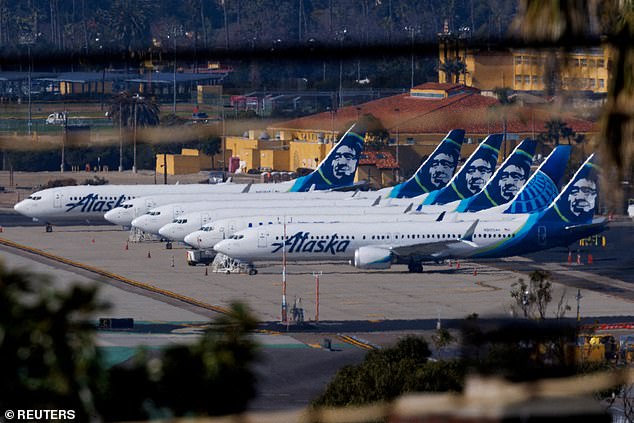Aviation experts reveal the SAFEST place to sit on a plane – and the simple tip that could save your life in a crash
- Aviation expert Anthony Brickhouse revealed there is no ‘safest’ seat on a plane
- He said there are safer parts of a plane to sit in, and recommends sitting near the wings
- Experts suggest counting the lines to the exit in case the cabin fills with smoke
There are many rules and regulations when it comes to flying, but most people are more concerned with identifying the safest seat on board.
In January, Boeing 737 Max 9 planes were grounded due to safety concerns, following a disastrous Alaska Airlines flight that had to make an emergency landing after a door plug flew out and left a gaping hole in the side of the plane.
The incident sparked a new wave of aviation safety concerns, all while Passengers have no control over whether a door flies or how a pilot lands a plane. The only thing they do get a say in is where they should sit – but where do you have to choose?
Although the ‘safest’ seating position depends on the type of emergency at hand, sitting near the wing, on the back or even backwards is generally recommended as the safest option if the aircraft is involved in a crash.
There are many rules and regulations when it comes to flying, but most people are more concerned with identifying the safest seat on board (stock image)
However, according to Anthony Brickhouse, an associate professor at Embry-Riddle Aeronautical University in Daytona Beach, Florida, there isn’t necessarily a “safest” place to sit.
Anthony himself tends to choose a seat at the back of the plane, as this has proven to be safer in the past.
His next choice would be the wing seats.
Anthony told it Wall Street Journal that an aircraft’s wings are ‘strong structural components’ and make that part of the aircraft more rigid, making them more likely to ‘withstand’ in a crash.
Time Magazine said that by looking at driving position, they found that the middle seats at the back of the plane had the best results, with a fatality rate of only 28 percent.
The worst seats for safety were on the aisle in the middle third of the cabin, with a fatality rate of 44 percent.
Graham Braithwaite, professor and director of transportation systems at Cranfield University in Britain, says airlines will often suggest passengers count the number of rows to an exit, even if the exit is behind them.
He added that this tip has saved lives in a crash, citing a man who successfully escaped a British Airtours fire at Manchester Airport in England in 1985 because he counted the lines to the exit and was able to open the door then find the vanity filled with smoke.

Despite the Alaska Airline blowout, 2023 was the second-safest year on record for airline safety, as evidenced by all airline incidents recorded last year on the Aviation Safety Network
Aviation experts are urging travelers to focus less on where they sit and more on airline safety instructions before the flight, as the safety information related to that specific aircraft may be different than that of other aircraft you have been on flown.
“It’s frustrating when I’m flying and looking around and very few people are paying attention,” Anthony admitted.
Despite the Alaska Airlines blowout, 2023 was the second-safest year on record for airline safety, as evidenced by all airline incidents last year Aviation Safety Network.
According to this database, out of 35 million flights, there were 1,213 serious incidents, 134 accidents, five fatal accidents and 105 deaths.
Air travel is consistently ranked as one of the safest modes of transport, with a report from airlineratings.com showing that the average number of air accidents over the past five years is 13 accidents per year and 300 deaths.
